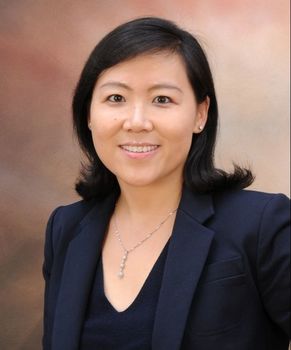Dr. Wanyun Shao is an Associate Professor of Geography at the University of Alabama. She is currently serving as the UA College of Arts & Sciences Leadership Board Fellow. She is also a faculty fellow for the Alabama Water Institute. She was a fellow for the National Science Foundation Enabling Next Generation of Hazards and Disaster Researchers Fellowship Program for the 2019 - 2021 round. She was an Early-Career research fellow of the National Academies of Sciences, Engineering, and Medicine Gulf Research Program from 2017-2019.
Her primary research interests are focused on the intersections of hazards, vulnerability, and risk decision making. Specific interests include: human dimension of climate change, community resilience/vulnerability to hazards, social response to hazards (i.e., flood, drought, hurricane, sea level rise, earthquake), and hazards and public health. Dr. Shao applies many quantitative methods in her research, including geospatial analysis and statistical analysis. The interdisciplinary nature of her research leads her to work across traditional disciplinary lines. She has worked with scientists in a wide range of fields, including climatology, civil and environmental engineering, political science, sociology, public policy, communication, statistics, and economics. Since 2014, she has published 48 peer-reviewed journal articles and one book chapter. 20 of the 48 peer-reviewed journal articles were lead-authored by her and 9 were lead-authored by the students she has advised. Her research has been sponsored by the National Academies of Sciences Gulf Research Program, U.S. Army Engineer Research and Development Center, National Oceanic and Atmospheric Administration, National Science Foundation, and the U.S. Department of Treasury. She has reviewed manuscripts for more than 30 journals including prestigious journals such as Nature Energy, Nature Climate Change, Nature Sustainability, and Nature Communications. For science communication, she has published several policy analysis articles for mass media outlets such as the Conversation, Vox, and the Washington Post. She has been quoted in the New York Times and National Geographic.
Dr. Shao was a research assistant for the multidisciplinary Southern Climate Impacts Planning Program (SCIPP), a Regional Integrated Sciences and Assessments (RISA) team funded by the NOAA. After receiving her Ph.D, she worked as a Coastal Resources Scientist in the Plan Development Unit at Coastal Protection and Restoration Authority (CPRA) in Louisiana.
Her primary research interests are focused on the intersections of hazards, vulnerability, and risk decision making. Specific interests include: human dimension of climate change, community resilience/vulnerability to hazards, social response to hazards (i.e., flood, drought, hurricane, sea level rise, earthquake), and hazards and public health. Dr. Shao applies many quantitative methods in her research, including geospatial analysis and statistical analysis. The interdisciplinary nature of her research leads her to work across traditional disciplinary lines. She has worked with scientists in a wide range of fields, including climatology, civil and environmental engineering, political science, sociology, public policy, communication, statistics, and economics. Since 2014, she has published 48 peer-reviewed journal articles and one book chapter. 20 of the 48 peer-reviewed journal articles were lead-authored by her and 9 were lead-authored by the students she has advised. Her research has been sponsored by the National Academies of Sciences Gulf Research Program, U.S. Army Engineer Research and Development Center, National Oceanic and Atmospheric Administration, National Science Foundation, and the U.S. Department of Treasury. She has reviewed manuscripts for more than 30 journals including prestigious journals such as Nature Energy, Nature Climate Change, Nature Sustainability, and Nature Communications. For science communication, she has published several policy analysis articles for mass media outlets such as the Conversation, Vox, and the Washington Post. She has been quoted in the New York Times and National Geographic.
Dr. Shao was a research assistant for the multidisciplinary Southern Climate Impacts Planning Program (SCIPP), a Regional Integrated Sciences and Assessments (RISA) team funded by the NOAA. After receiving her Ph.D, she worked as a Coastal Resources Scientist in the Plan Development Unit at Coastal Protection and Restoration Authority (CPRA) in Louisiana.
Proudly powered by Weebly
